Shuipo Liangshan Scenic Area
Shuipo Liangshan Scenic Area
Shuipo Liangshan Scenic Area is located in Liangshan County, Jining City, Shandong Province, with an area of 4.6 square kilometers. It was named for the Liangshan Uprising in Shuihuzhuan, one of the four famous works.
In 1985, Shuipo Liangshan Scenic Spot was first declared as provincial scenic spot by Shandong Provincial Government. In 2002, Shuipo Liangshan Scenic Spot was assessed as national AAA level tourist area by the National Tourism Administration, and became the core scenic spot of Shuipo Liangshan Tourism Line in Shandong Province. In 2008, Shuipo Liangshan Scenic Spot was awarded National AAAA Tourist Area .
There are six national and provincial highways in Shuibaoliangshan Scenic Spot, which are adjacent to Beijing-Fuzhou, Beijing-Shanghai Expressway and Beijing-Shanghai Railway, less than 100 kilometers apart. Jihe Expressway and Jingjiu Railway run across the hinterland of the county, and form a golden triangle tourist area with Taishan and Qufu.
Development history
Liangshan has a long history. As early as in ancient times, our ancestors lived there, fishing and hunting.
The second son of Emperor Wendi of Han Dynasty, Liang Xiaowang, was named for his hunting. In the first year of Xuanhe in the Northern Song Dynasty (1119 A.D.), the imperial government was decadent and the people were not bored with life. Song Jiang formed heroes and heroes all over the world. He relied on water to pool dangerous waters and roar around Liangshan.
In 2001, Shuipo Liangshan Scenic Spot was included in the "Tenth Five-Year" Tourism Development Plan of Shandong Province by the Shandong Provincial Government. In 2002, it was assessed as a national AAA-level tourist area by the National Tourism Administration, and became the core scenic spot of the Shuipo tourism line of Shandong Province.
In 2005, Shuipo Liangshan Scenic Spot renovated Zhongyitang, Hao Lingtai and Shijie Wentai, and was named "Top Ten Mountain Tourism Area".
In 2013, the Songjiang legend, the legend of King Xiao Liang and the legend of Liangshan in Shuipo Liangshan Scenic Area were selected as the intangible cultural heritage protection projects in Liangshan County.
geographical environment
Location context
Shuipo Liangshan Scenic Area is located in Liangshan County, Southwest Shandong Province, with an elevation of 197.9 meters. It is located in the middle of Liangshan County and southeast of Liangshan County. It lies between 35 47 12.85 in the north latitude and 116 05 56.22 in the East longitude. Covering an area of 3.5 square kilometers, Liangshan tourist area covers an area of 4.6 square kilometers.
climate
Shuibaoliangshan Scenic Spot is located in the warm temperate semi-humid area, which belongs to continental monsoon climate. The annual average temperature is 13.5 C, the rainfall is 601 mm, and the frost-free period is 205 days.
topographic features
Shuipo Liangshan Scenic Spot is high in the southwest and low in the northeast. It consists of four main peaks of Liangshan, Qinglong Mountain, Fenghuang Mountain, Guishan Mountain and seven branches of Hutou Peak, Xueshan Peak, Haoshan Peak and Xiaohuangshan Mountain. The main peaks of the two mountains are 197.9 meters high, the highest elevation of the ground is 47.6 meters, and the lowest elevation is 35.9 meters.
Scenic spot distribution
Shuibaoliang Mountain Scenic Spot consists of seven branches and eight peaks. The main peak of Hutou Peak is connected with a narrow ridge to the north, namely Heifengkou, Heifengkou, three mountains to the north, three mountains to the East are snow peaks, the snow peak extends eastward to a relatively flat part, Xiaoping Mountain, then to the east to the Yuhuangding Peak, and the snow peak extends northward to Xiaohuangshan Mountain, which extends northwest to the East Dogzhao Mountain and westward to the west. From east to west, there are three peaks: Goutou Mountain, West Dogzhao Mountain and Haoshan Mountain. There are also Eastern and Western peaks, such as Guzi Mountain and Qinglong Mountain. From Guzi Mountain to north, there is Xiaoliang Peak, also known as Back Mountain.
Special snacks
Food culture in Shuibao Liangshan Scenic Area is an important part of Shuibao culture. According to the food culture in Shuibao and Liangshan specialty, the feasts excavated include: Shuibao feast, Shuibao feast, Liangshan Lake health-preserving feast, Liangshan vegetarian feast and so on. Among them, there are five kinds of delicacies, such as "Haohan Bulk Meat", "Shiqian Chicken", "Shishishi shrimp Ren" and "Sun Erniangren Meat Baozi". "Water Margin Banquet" is the main dish. At the same time, 14 special dishes, such as sweet and sour carp of the Yellow River, chicken with milk soup, fried papaya flowers and sweet and fresh lotus seeds, have been developed.
Scenic spot culture
Tea Culture in Song Dynasty
Compared with the tea science of Tang Dynasty, the tea science of Song Dynasty formed a strong era and regional color in academic topics. These studies, handed down in the form of works, provided detailed information for the study of tea history and tea culture in the Song Dynasty in 2013.
Among the tea works of Song Dynasty, the most famous ones are Ye Qingchen's Essays on Tea Boiling, Caixiang's Tea Records, Song Zi'an's Dongxi Tea Testing Records, Shen Kuo's Tea Law of the Present Dynasty and Zhao Biao's Daguan Tea Theory.
Among the tea writers of the Song Dynasty, there were Zhao You, the leader of a country, Ding Wei, Cai Xiang, the court minister and the writer, Shen Kuo, the famous natural scientist, the local Confucian, the scholar, and even the hermit who did not know his real name, who "tried an old man". Judging from the identity of these authors, the talents and research levels of tea science in Song Dynasty were very rich. The research contents include the comparison of tea producing areas, tea cooking skills, tea type, the relationship between raw materials and tea, tea drinking utensils, tea fighting process and appreciation, tea quality evaluation, Beiyuan Gong tea name and facts, etc.
Tea learning in Song Dynasty was more focused on building tea, so it had new development in depth and systematically compared with that in Tang Dynasty.
Liangshan Wushu
Chinese Wushu has a long history. Since recorded in historical materials, it has been a popular and easy-to-carry out traditional sports activity in Liangshan. It has been passed on for more than 900 years until 2010. It has always been said that if you drink Liang Shanshui, you will stretch out your arms and kick your legs.
Liangshan Wushu is a very characteristic performance program in Shuipo Liangshan. The whole performance consists of Wushu routine, Chan wand, board axe, nine-knot whip, crescent shovel, three-person practice and hard Qigong, among which the hard Qigong performance is splendid. There are mainly three special performances: broken stone board on tofu, steel gun on throat, four guns on top of body, and the performance ends with a big set. 。
Tourism information
Ticket Price
Ticket Price
Ticket price of Shuipo Liangshan Scenic Spot: 60 yuan, 42 yuan.
Ticket description
(1) Opening time of scenic spots: 6:30-19:00;
(2) Children's tickets: height 1.2-1.4 meters enjoy 30 yuan per person, free of tickets below 1.2 meters;
(3) 60-69-year-olds enjoy 30 yuan per person with an old age certificate; active servicemen enjoy 30 yuan per person with an officer's certificate or a soldier's certificate; revolutionary disabled soldiers have their own military disability certificate; retired cadres have their retirement certificate; and those over 70 years old are exempted from vouchers with an old age certificate;
(4) Go directly to the Finance Office to collect the tickets (8:00-11:30; 14:30-18:30 p.m.).
Traffic information
Bus
From Liangshan Bus Station and Railway Station, take Bus No. 2 to Liangshan Scenic Area (Song Street).
Self driving
(1) Jingfu Expressway - Ridong Expressway - Jining Export - 40 km west along Jiliang Highway or 105 National Highway to Wenshan and 60 km north to Liangshan.
(2) Jingfu Expressway-Ridong Expressway-Jining North Export-105 National Highway northbound-Wenshang-Westbound to Houssunzhuang Village-along 220 National Highway northbound to the county town about 9 km-Songjiekou of Liangshan County-Liangshan Scenic Area, which takes about 50 minutes to get off the expressway.
(3) There are signs for scenic spots in the middle section of Jihe Expressway - Liangshan Exit - along 333 Provincial Highway westbound to Liangshan County Town - Shuipo South Road.
(4) Jinan-Pingyin-Wenshang-Liangshan.
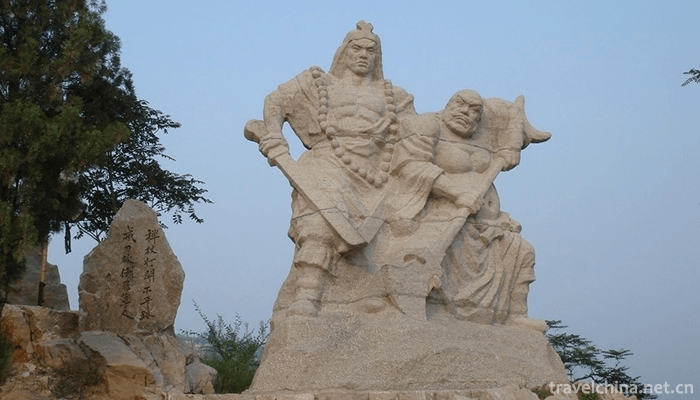

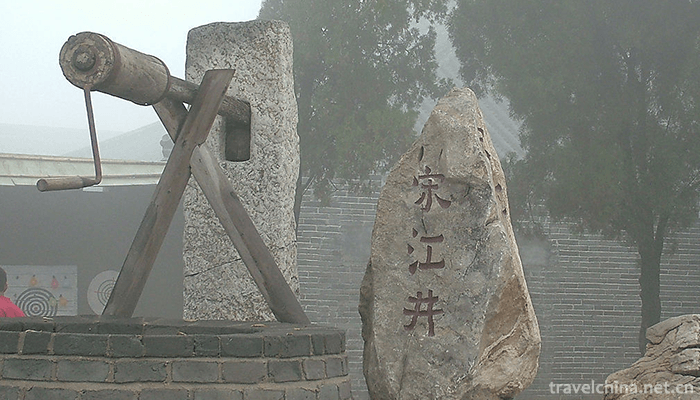
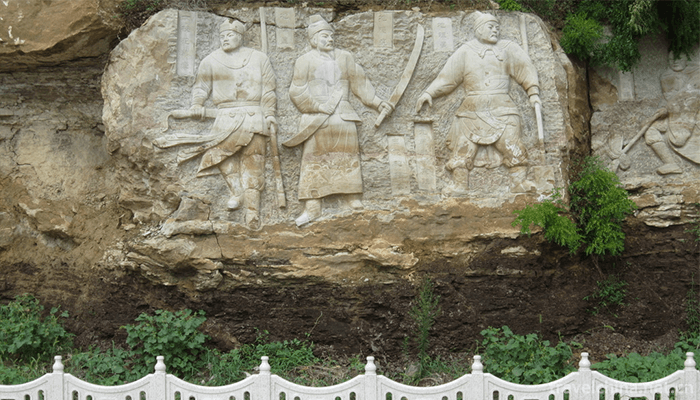
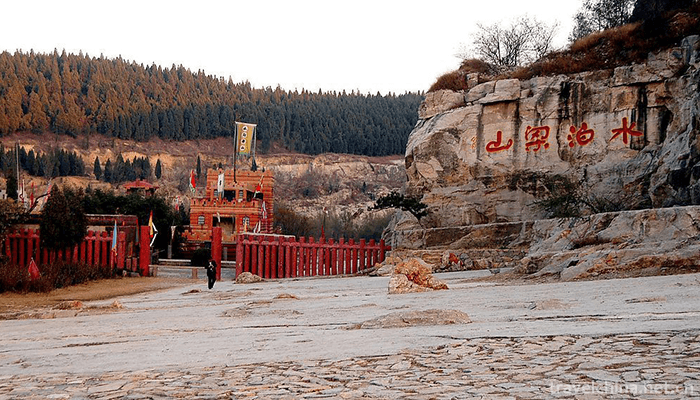
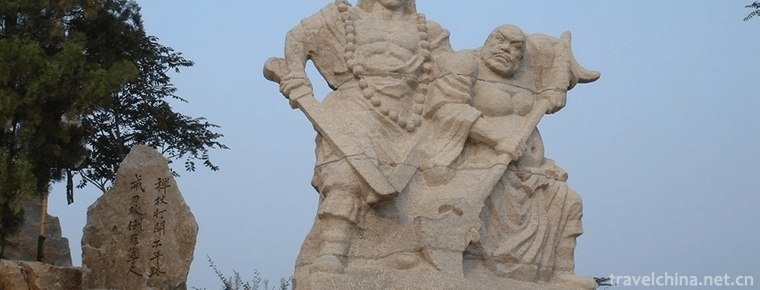
-
1.Peace Hotel Shanghai
Peace Hotel is a landmark building in Shanghai. Located at No. 20 East Nanjing Road, Huangpu District, Shanghai, it is the first modern building in the history of modern architecture in Shanghai
Time 2018-12-16 -
2.Feng Guo Temple
Fengguo Temple is located in Yixian County, Jinzhou City, Liaoning Province, China. It was founded in the ninth year of Kaitai, Liaoning Province (1020). It was first named Xianxi Temple and later cha
Time 2019-01-12 -
3.Leifeng Memorial Hall in Fushun
The Leifeng Memorial Hall in Fushun City is located at No. 61, East Section of Peace Road, Wanghua District, Fushun City, Liaoning Province. It covers an area of 99900 square meters, near the army sta
Time 2019-01-12 -
4.Huguangyan Scenic Spot
Huguangyan Scenic Spot is located 18 kilometers southwest of Zhanjiang City, the southernmost part of the mainland of China. It is called "natural yearbook" of earth and geological science b
Time 2019-01-16 -
5.Linhai Qishi Scenic Area
Linhai Qishi Scenic Area is located in Tangwanghe District, Yichun City, Heilongjiang Province. Scenic area covers 190 square kilometers. It is a new eco-tourism area and National Geological Heritage
Time 2019-01-30 -
6.Ten times of music
Shifan music is a traditional instrumental music spread by Hakkas in Fuzhou and Western Fujian Province. It has been circulated since the middle of Daoguang in the Qing Dynasty. The origin of Shifan m
Time 2019-06-15 -
7.Turkish Pan Embroidery
Pan embroidery is the most important embroidery method in Chinese Tu embroidery, and it is a compulsory course for Tu women in their lifetime. Pan embroidery is a unique embroidery method of the Tu na
Time 2019-06-23 -
8.Wuhan acrobatics
In the 20 years of Qingdaoguang (1840), folk acrobats from Tianmen, Wuyang and other places in Hubei came to Wuhan to perform, and then gradually formed a class club to enter the stage. Folk artists s
Time 2019-06-30 -
9.Firing Techniques of Yaozhou Kiln Ceramics
Yaozhou kiln is a treasure of Chinese traditional ceramic technology. It was created in the Tang Dynasty and matured in the Five Dynasties. It reached its peak in the Song Dynasty and declined gradual
Time 2019-07-11 -
10.Tongling University
Tongling University is a multi-disciplinary province. Undergraduate Regular institutions of higher learning It is the base for training and training talents of Finance and economics in Anhui province.
Time 2019-11-18 -
11.Natural resources of Panzhihua
Panzhihua is rich in hydropower resources, with theoretical reserves of more than 6.879 million kilowatts and exploitable capacity of 5.994 million kilowatts. The distribution of hydropower resources in Panzhihua area is concentrated, mainly distributed in the Jinsha River and Yalong River, as well as the tributaries of Anning River, Yongxing River and Tengqiao river.
Time 2020-12-14 -
12.Nanchongs tertiary industry
In 2019, investment in real estate development in Nanchong will increase by 23.6% compared with that in 2018. The construction area of commercial housing was 31.8726 million square meters, an increase of 23.5% over that in 2018, of which the newly started
Time 2020-12-17